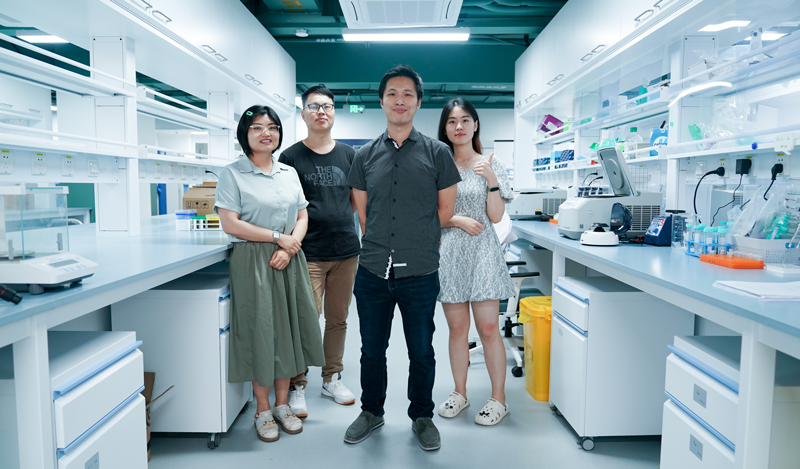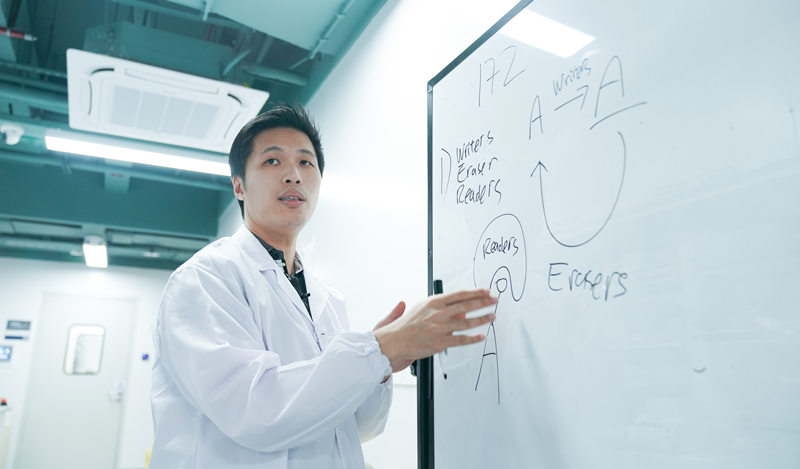"
WEE SIONG GOH, also known as Sho Goh, a scientist from Singapore, is one of the principal investigators at Shenzhen Bay Laboratory’s Institute of Molecular Physiology.
Sho received his bachelor’s degree in bioengineering from the University of Pennsylvania in the U.S. and his Ph.D. degree from Cold Spring Harbor Laboratory, a private nonprofit research institution in the Long Island of New York State.

Sho (2nd R) and his team members pose for a group photo at his lab on June 16.
He came to Shenzhen Bay Laboratory in 2020 and has built a team that develops new technologies to sequence RNA modifications, find factors that influence RNA modifications, and observe how RNA modifications affect molecules, cells, tissues, organs and human bodies.
We know that RNA, or ribonucleic acid, is typically a single-stranded biopolymer. Now, let’s imagine them as words that can be formatted. They can be underlined, highlighted, made bold, italic, or have their colors changed. This formatting is analogous to RNA modification.

Sho explains what an RNA modification is during an interview with Shenzhen Daily on June 16.
Different RNA modifications play different roles in our bodies. Sho and his team study how RNA modifications influence the health of human bodies and how to develop therapies for different diseases caused by defects in various RNA modifications.
In our body, certain proteins are responsible for writing, erasing and reading RNA modifications. For Sho’s team, the first strategy is to find out what are the writers, readers and erasers.

Sho performs an experiment at his lab at Shenzhen Bay Laboratory in Guangming District on June 16.
To manipulate an RNA modification, one must first identify where it is. For the team, the second strategy is developing new technologies to sequence and map the locations of RNA modifications.
With all the information collected from the first two strategies, the team comes to the third strategy: understanding how different RNA modifications impact different diseases and developing therapies based on studying RNA modifications.
Through these three overlapping strategies, Sho and his team are gradually approaching their ultimate goals.
Edited by: Shenzhen Daily













